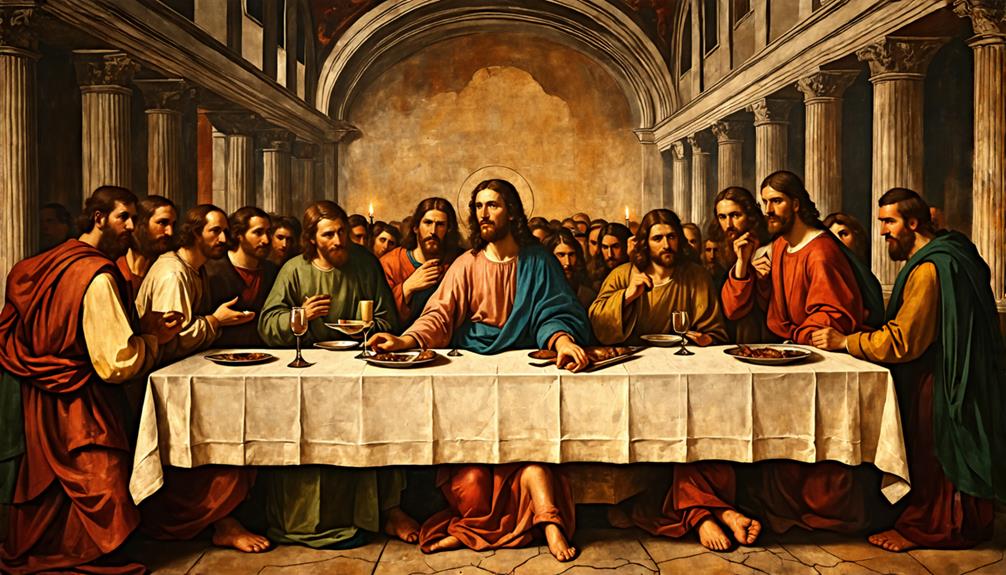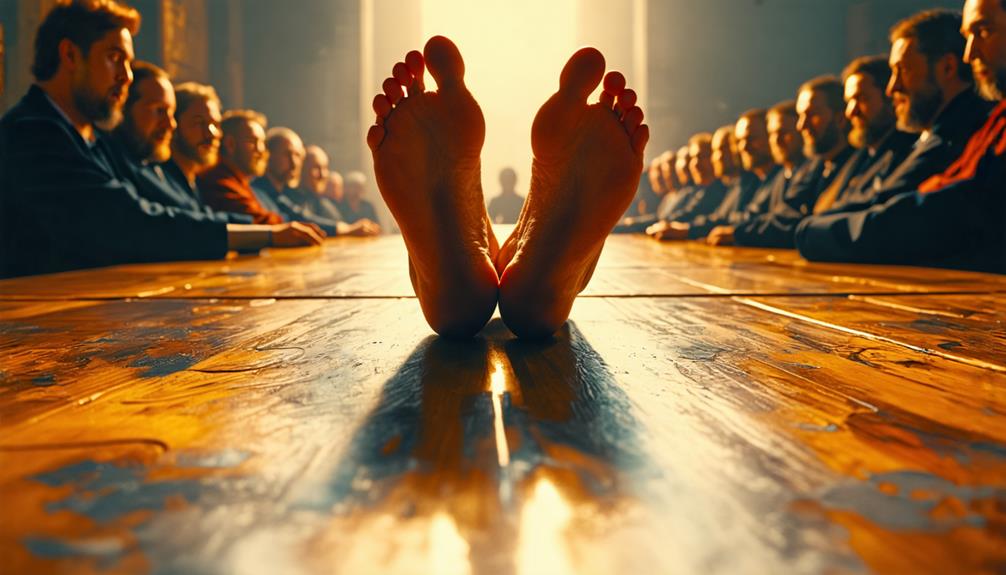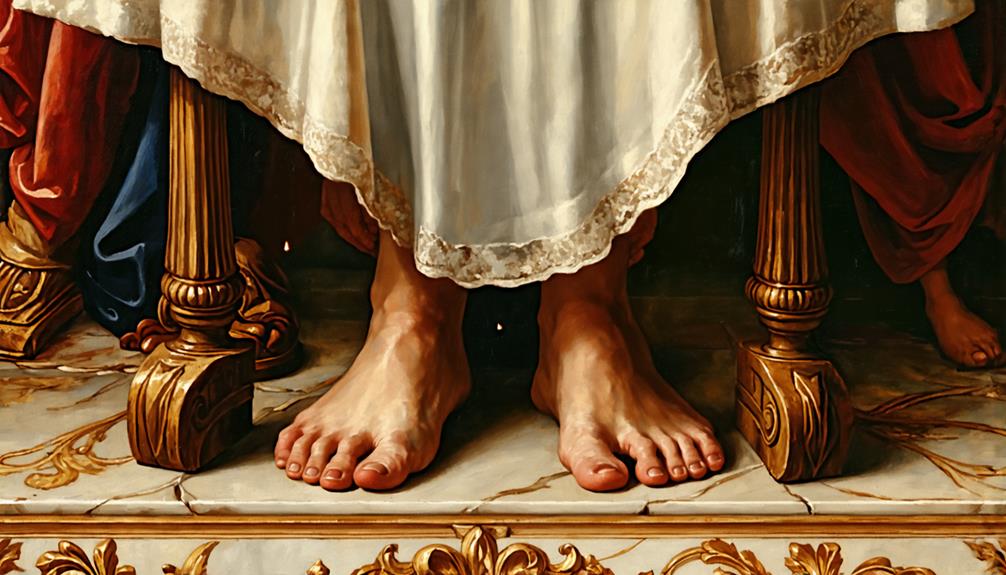You've likely seen Leonardo da Vinci's iconic painting 'The Last Supper' countless times, but there's a vital detail you might've missed. Originally, the masterpiece featured Jesus' feet, a seemingly small element that carried profound symbolism. This often-overlooked aspect of the composition held significant meaning, foreshadowing Christ's crucifixion and sacrifice. However, a 17th-century alteration to the wall housing the fresco permanently changed the artwork, leaving art historians and viewers to ponder what was lost. The story behind these missing feet opens up intriguing questions about artistic intent, historical preservation, and the power of subtle details in conveying religious narratives.
Key Takeaways
- The original composition of The Last Supper included Jesus' feet, visible in early copies by da Vinci's assistants.
- A doorway cut in 1652 removed Jesus' feet from the painting, prioritizing practicality over artistic integrity.
- The feet's visibility emphasized emotional dynamics and foreshadowed Christ's crucifixion and sacrifice.
- Restoration efforts, completed in 1999, aimed to recover original details and reveal hidden aspects of the painting.
The Missing Feet Mystery

A peculiar architectural decision in 1652 forever altered da Vinci's masterpiece, leaving Jesus' feet mysteriously absent from The Last Supper. You'll find that a doorway cut through the lower portion of the painting removed this significant element, prioritizing practicality over artistic integrity. Historical accounts describe an odd arch at the bottom, a remnant of this alteration in the Dominican monastery's refectory.
To understand the original appearance of The Last Supper, you'd need to look at early copies made by Leonardo da Vinci's assistants. These reveal the importance of Jesus' feet in the overall composition.
Restoration efforts have since attempted to rectify this loss by bricking up the doorway. Now, when you visit, you'll see the painting beneath where Jesus' feet once were, offering a glimpse into the artist's original vision and painting method.
Restoration and Rediscovery
While the removal of Jesus' feet altered the original composition, extensive restoration efforts have sought to recapture Leonardo's vision and preserve the remaining elements of The Last Supper for future generations.
The doorway alteration greatly impacted the original artwork, but conservators have worked tirelessly to maintain its artistic integrity. Their approach includes:
- Studying early copies to understand Leonardo's intentions
- Employing modern restoration techniques to recover original details
- Addressing the painting's deteriorating condition
The two-decade restoration completed in 1999 focused on rediscovering hidden aspects of the masterpiece.
Despite these efforts, challenges persist in balancing preservation with the artwork's historical importance.
The peculiar arch at the bottom serves as a reminder of past damages, while ongoing discussions highlight the complexities of maintaining this iconic piece.
You'll find that restoration and rediscovery continue to play vital roles in safeguarding The Last Supper's legacy.
Symbolism in Christ's Posture

Christ's posture in Leonardo's masterpiece carries profound symbolism, revealing layers of meaning beyond the surface narrative.
You'll notice that Jesus's feet, originally visible, were positioned in a way that foreshadowed his crucifixion, emphasizing the theme of sacrifice. This detail, now lost due to alterations, was essential in understanding the emotional dynamics of the Last Supper scene.
The positioning of Jesus's feet, combined with his gestures towards the bread and wine, reinforced the concepts of communion and imminent betrayal. Without this element, the interpretation of Christ's posture has changed, affecting how you perceive the central figure's role in the composition.
The original depiction added depth to the painting's symbolism, connecting the physical representation of Jesus to the spiritual significance of the event. It's a reflection of how even subtle details can profoundly impact an artwork's meaning.
Conclusion
You've discovered a hidden aspect of da Vinci's masterpiece. The missing feet of Jesus aren't just a lost detail; they're a key to understanding the painting's deeper meaning.
As you contemplate *The Last Supper*, imagine Christ's feet, symbolizing his impending sacrifice. This knowledge enriches your appreciation of the artwork's complexity.
Remember, what's absent can be as powerful as what's present in art's ability to convey profound truths.

Leave a Reply